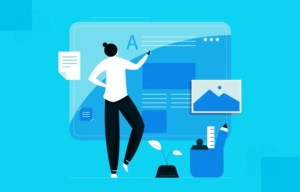What is the  definition of web design?
definition of web design?
The process of building websites that are shown on the internet is known as web design. It mainly refers to the user experience aspects of website building rather than programme development. Web design was mostly focused on building websites for desktop browsers before to the mid-2010s; now, mobile and tablet browser design has become increasingly significant.
Responsive and adaptive design are two of the most popular ways for creating websites that perform effectively on both desktop and mobile platforms. Content changes dynamically in response to screen size in responsive design; website content is fixed in layout sizes that match popular screen sizes in adaptive design. Maintaining user trust and interest across devices necessitates a layout that is as consistent as possible. Because responsive design can be difficult in this regard, designers must be wary of relinquishing control over the appearance of their work. They will profit from having complete control over the final output, even if they will need to expand their skill set if they are also in charge of the content.
Skills and tools for web designers
Developing a great digital product necessitates a sophisticated approach that extends beyond aesthetic considerations. It necessitates an in-depth understanding of business analysis, user research, psychology, and software development. As a result, working as a web designer may be a difficult and diverse career that necessitates a wide range of technical and soft talents. The following are the top five skills a web designer should possess:
Familiar with several Design Tools:
There are numerous tools available to assist web designers in creating excellent digital products. Figma, Illustrator, and Photoshop are a few of our favourites. There are also new design tools for remote teams; in fact, this is one of Figma’s strongest aspects, but MURAL and Miro both appear to be promising.
HTML and CSS:
CSS is all about style, but HTML provides the foundation for a well-structured content. In this scenario, both Visual Studio Code and Dreamweaver are excellent front-end coding editors. JavaScript would be the icing on the cake for individuals looking to take their web development talents to the next level.
Excellent Listener (not just a great one):
Listening is an important (and first) soft talent to develop. It’s critical to pay attention to what clients want, as well as their visions, values, and stories. Because strong communication necessitates superb grasp of what is being said, this competence should be the beginning point for an extraordinary web design project. It’s as simple as that, yet it’s not always easy to put into practice.
Curiosity and Open Mind:
As previously stated, a web designer must be knowledgeable in a variety of fields, including business, psychology, development, and so on, in addition to mastering design and usability principles. As a result, it’s critical to retain an open mind when learning new technologies and exploring fields outside of one’s comfort zone. Furthermore, the more fascinated a web designer is about various interests, the better able they are to grasp various users.



